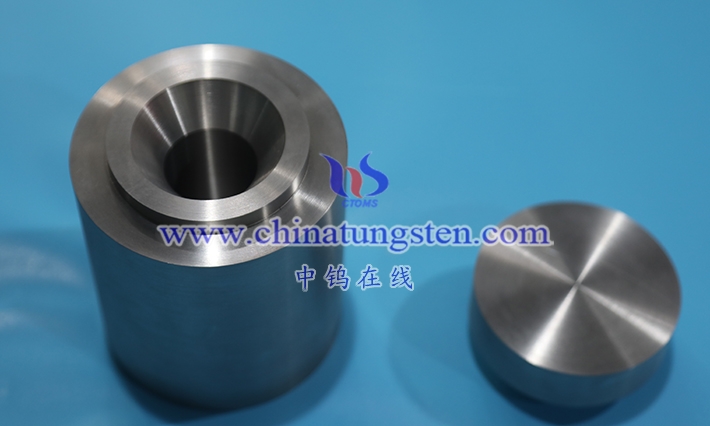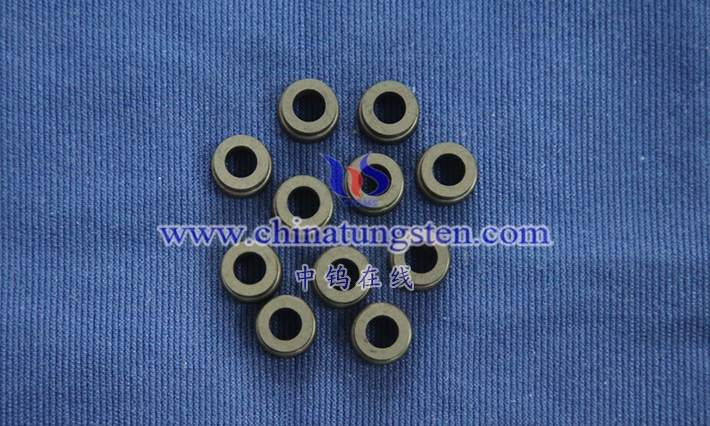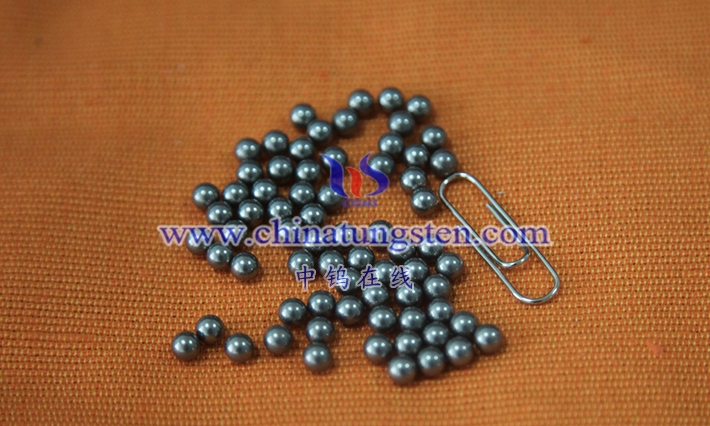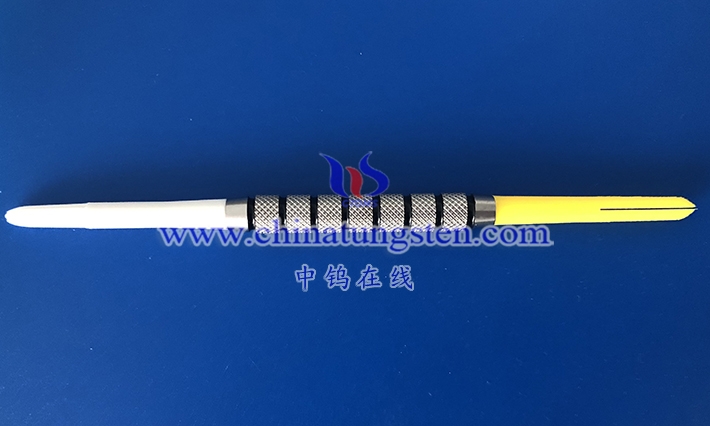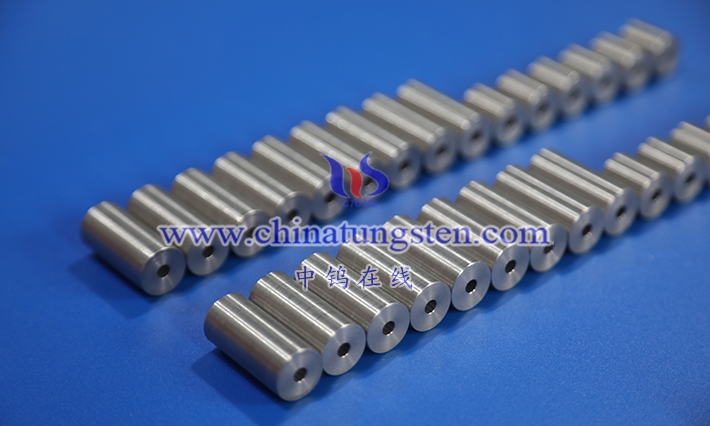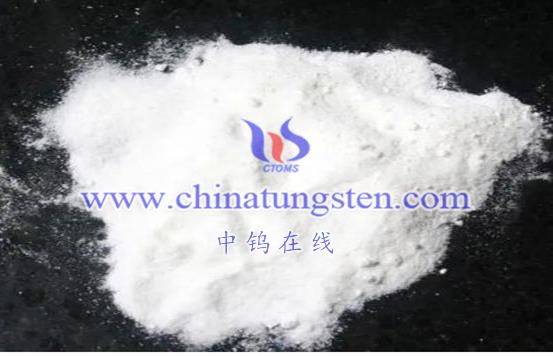
CONTENT
Chapter 1: Introduction
1.1 Definition and Historical Development of Ammonium Paratungstate (APT)
1.2 Importance of Ammonium Paratungstate in Tungsten Chemistry and Industry
1.3 Differences and Connections Between APT and AMT
1.4 Purpose and Structure of This Book
Chapter 2: Ammonium Paratungstate Product Information
2.1 Basic Chemical Properties of Ammonium Paratungstate
2.1.1 Molecular Structure and Chemical Formula of Ammonium Paratungstate
2.1.2 Appearance and Morphology of Ammonium Paratungstate
2.2 Physical Properties of Ammonium Paratungstate
2.2.1 Density and Solubility of Ammonium Paratungstate
2.2.2 Thermal Stability and Decomposition Behavior of Ammonium Paratungstate
2.3 Chemical Properties of Ammonium Paratungstate
2.3.1 Acid-Base Reactivity of Ammonium Paratungstate
2.3.2 Redox Characteristics of Ammonium Paratungstate
2.4 Specifications and Grades of Ammonium Paratungstate
2.4.1 Industrial-Grade APT
2.4.2 High-Purity APT
2.5 Packaging and Storage Requirements for Ammonium Paratungstate
Chapter 3: Ammonium Paratungstate Preparation Process
3.1 Raw Material Sources for Ammonium Paratungstate
3.1.1 Natural Tungsten Ores (Wolframite and Scheelite)
3.1.2 Tungstate Intermediates
3.2 Traditional Preparation Methods for Ammonium Paratungstate
3.2.1 Alkaline Process
3.2.2 Acid Process
3.2.3 Solvent Extraction Method
3.3 Emerging Preparation Technologies for Ammonium Paratungstate
3.3.1 Green Synthesis and Low-Ammonia Processes
3.3.2 Improved Ion Exchange Method
3.4 Industrial Production Process of Ammonium Paratungstate
3.4.1 Pretreatment and Leaching
3.4.2 Crystallization and Separation
3.4.3 Drying and Packaging
3.5 Optimization of Process Parameters for Ammonium Paratungstate
3.5.1 pH and Temperature Control
3.5.2 Concentration and Crystallization Conditions
3.6 Technical Challenges and Solutions for Ammonium Paratungstate
3.6.1 Impurity Removal
3.6.2 Energy Consumption and Waste Management
3.7 Laboratory vs. Industrial Scale Comparison
Chapter 4: Ammonium Paratungstate Analysis and Testing
4.1 Chemical Composition Analysis of Ammonium Paratungstate
4.1.1 Determination of Tungsten Content (WO₃)
4.1.2 Determination of Ammonium Content (NH₄⁺)
4.1.3 Impurity Analysis (Mo, Fe, Na, etc.)
4.2 Physical Property Testing of Ammonium Paratungstate
4.2.1 Crystal Structure Analysis (XRD, SEM)
4.2.2 Particle Size Distribution and Morphology
4.2.3 Moisture and Volatile Content
4.3 Quality Control Standards for Ammonium Paratungstate
4.3.1 International Standards (ISO)
4.3.2 Chinese National Standards (GB)
4.4 Testing Techniques and Instruments for Ammonium Paratungstate
4.4.1 ICP-MS and AAS
4.4.2 TGA and Particle Size Analyzer
4.5 Case Studies on Ammonium Paratungstate
4.5.1 High-Purity APT Test Report
4.5.2 Batch Validation of Industrial-Grade APT
Chapter 5: Industrial Applications of Ammonium Paratungstate
5.1 Core Role in Tungsten Metallurgy
5.1.1 Production of Tungsten Trioxide (WO₃)
5.1.2 Manufacturing of Tungsten Powder and Tungsten Materials
5.2 Cemented Carbide and Tungsten Alloys
5.2.1 Application of APT in Cemented Carbide
5.2.2 High-Density Tungsten Alloy Products
5.3 Chemical Industry and Catalysts
5.3.1 Conversion of APT to AMT
5.3.2 Other Tungsten-Based Catalysts
5.4 Special Applications
5.4.1 Ceramic Colorants
5.4.2 Laboratory Reagents
5.5 Application Case Studies
5.5.1 APT in Tungsten Wire Production
5.5.2 Manufacturing of Cemented Carbide Tools
5.5.3 Aerospace Components
Chapter 6: Ammonium Paratungstate Market and Economy
6.1 Global Production and Distribution of Ammonium Paratungstate
6.1.1 China’s Dominant Position
6.1.2 Production in Other Countries
6.2 Price Trends and Influencing Factors of Ammonium Paratungstate
6.2.1 Historical Price Fluctuations
6.2.2 Raw Material Costs and Demand Drivers
6.3 Supply and Demand Analysis of Ammonium Paratungstate
6.3.1 Demand Sectors and Growth Points
6.3.2 Supply Constraints and Bottlenecks
6.4 Major Producers and Market Landscape of Ammonium Paratungstate
6.4.1 CTIA GROUP
6.5 Economic Impact of Ammonium Paratungstate
6.5.1 Contribution to the Tungsten Industry Chain
6.5.2 Regional Economic Development
6.5.3 Exports and Trade Balance
6.6 Future Market Forecast for Ammonium Paratungstate
Chapter 7: Ammonium Paratungstate Environment and Safety
7.1 Environmental Impact of Ammonium Paratungstate
7.1.1 Environmental Cost of Tungsten Mining
7.1.2 Waste Emissions in APT Production
7.1.3 Environmental Risks in Downstream Applications
7.2 Environmental Technologies and Measures for Ammonium Paratungstate
7.2.1 Wastewater Treatment and Recycling
7.2.2 Exhaust Gas Control Technologies
7.2.3 Solid Waste Management and Recycling
7.3 Safety Characteristics of Ammonium Paratungstate
7.3.1 Toxicity Assessment of APT
7.3.2 Operational and Storage Safety
7.4 Regulations and Compliance for Ammonium Paratungstate
7.4.1 Chinese Environmental Regulations
7.4.2 International Safety Standards
7.5 Case Studies
7.5.1 Environmental Practices of CTIA GROUP
7.5.2 Lessons from APT Transport Incidents
7.6 Challenges and Strategies for Sustainable Development of Ammonium Paratungstate
Chapter 8: Research Frontiers and Future Outlook for Ammonium Paratungstate
8.1 Research on New Preparation Technologies
8.1.1 Low-Energy Consumption Processes
8.1.2 Synthesis of High-Purity APT
8.2 Exploration of Cutting-Edge Applications
8.2.1 Potential of APT in New Energy Materials
8.2.2 Nanotechnology and APT
8.3 Interdisciplinary Research Directions
8.3.1 APT and Intelligent Manufacturing
8.3.2 Environmentally Friendly Applications
8.4 Future Development Trends
8.4.1 Technological Innovation and Industrial Upgrading
8.4.2 Market Expansion and Globalization
8.4.3 Sustainable Development Goals
Chapter 9: Quality Control and Test Reports for Ammonium Paratungstate
9.1 CTIA GROUP Ammonium Paratungstate Quality Inspection Sheet
9.2 Electron Microscopy Photo Analysis of Ammonium Paratungstate
9.3 Case Studies and Interpretation of Quality Testing
Chapter 1: Introduction
1.1 Definition and Historical Development of Ammonium Paratungstate (APT)
Ammonium Paratungstate (APT), with the chemical formula (NH₄)₁₀(H₂W₁₂O₄₂)·4H₂O, is an important tungstate compound. As a white crystalline powder, APT serves as a core intermediate in tungsten chemistry and industry, holding an irreplaceable position in tungsten metallurgy due to its stable chemical properties and high purity. The molecular structure of APT consists of a polytungstate cluster formed by 12 tungsten atoms linked through oxygen atoms, surrounded by 10 ammonium ions to balance the charge, and includes 4 water molecules of crystallization. This structure imparts unique advantages to APT in high-temperature decomposition and industrial applications, making it a critical transitional product from tungsten ore to metallic tungsten and other tungsten compounds.
The history of APT dates back to the late 19th century when the industrial value of tungsten began to emerge, prompting scientists to explore effective methods for extracting high-purity intermediates from tungsten ores. By the early 20th century, APT preparation processes had matured, establishing it as a widely recognized standard raw material for tungsten powder production. Early preparation methods relied heavily on alkaline leaching and crystallization processes, but with technological advancements, the introduction of acid processes and solvent extraction methods further improved APT’s purity and yield. Today, APT has evolved into a foundational pillar of the global tungsten industry, particularly in China—a country rich in tungsten resources—where its production and application technologies have reached world-leading levels.
CTIA GROUP Ammonium Paratungstate Quality Inspection Sheet

Ammonium paratungstate SEM CTIA GROUP LTD
1.2 Importance of Ammonium Paratungstate in Tungsten Chemistry and Industry
In the fields of tungsten chemistry and industry, the significance of Ammonium Paratungstate (APT) lies in its role as a pivotal “hub” within the tungsten industry chain. Tungsten, with its ultra-high melting point (3422°C), high density (19.25 g/cm³), and excellent corrosion resistance, is widely utilized in high-tech sectors such as aerospace, military, electronics, and energy. Within the processing chain from tungsten ores (e.g., wolframite and scheelite) to finished products, APT serves as a critical link between ore extraction and downstream advanced processing. Through roasting or reduction, APT can be directly converted into tungsten trioxide (WO₃) or metallic tungsten powder, which are then used to produce high-performance materials such as tungsten wire, cemented carbide, and tungsten steel.
The importance of APT extends beyond its widespread use as a raw material to its process flexibility in tungsten metallurgy. Compared to other tungsten compounds, APT boasts a mature and controllable production process capable of meeting diverse purity requirements. For instance, industrial-grade APT is employed in large-scale tungsten powder production, while high-purity APT caters to the sophisticated needs of the electronics industry. Furthermore, APT serves as a starting material for preparing other tungstates, such as Ammonium Metatungstate (AMT), expanding its derivative applications in the chemical industry and broadening its value chain. In essence, APT is a dual cornerstone of technological advancement and economic benefits in the tungsten industry.
1.3 Differences and Connections Between APT and AMT
When discussing the importance of APT, it is inevitable to compare it with Ammonium Metatungstate (AMT). Both APT and AMT are ammonium tungstate compounds, yet they exhibit significant differences in structure, properties, and applications. APT has the chemical formula (NH₄)₁₀(H₂W₁₂O₄₂)·4H₂O, containing 10 ammonium ions, with a crystal structure that tends to form aggregates and low water solubility (less than 2% at 20°C). In contrast, AMT, with the formula (NH₄)₆H₂W₁₂O₄₀·xH₂O, contains 6 ammonium ions and adopts a Keggin-type single molecular cluster structure, offering extremely high water solubility (approximately 300 g WO₃/100 ml H₂O at 25°C). These structural differences result in divergent application pathways: APT is primarily used in solid-state metallurgical processes, such as the production of tungsten powder and materials, while AMT is better suited for solution-based processes, such as catalyst preparation and nanomaterial synthesis.
Despite their differences, APT and AMT are not entirely disconnected; they share a close relationship. APT can be converted into AMT through specific processes (e.g., thermal decomposition or acidification), serving as a precursor in its industrial production. This transformation not only highlights the versatility of tungstate compounds but also underscores APT’s foundational role in the tungsten industry chain. Understanding the distinctions and connections between APT and AMT provides a more comprehensive grasp of the complexity and application potential of tungsten chemistry.
1.4 Purpose and Structure of This Book
Why is there a need for an Encyclopedia of Ammonium Paratungstate? The answer lies in the vast and fragmented nature of APT’s knowledge system. Although APT is a core intermediate in the tungsten industry, information about it is often scattered across academic literature, technical manuals, and industry reports, lacking systematic integration. Chemists may focus on its molecular structure and properties, engineers on its preparation processes and quality control, and business professionals on its market dynamics and economic value. This book aims to bridge that gap, offering a comprehensive perspective on APT—from fundamental chemistry to industrial applications and future developments—serving as a one-stop knowledge resource for readers. Whether you are a tungsten industry practitioner, a researcher, or an enthusiast of tungsten materials, this book has something valuable to offer.
The book is divided into ten chapters, structured logically with progressively deepening content. Chapter 1, as an introduction, outlines APT’s definition, history, and significance, laying the groundwork for subsequent sections. Chapter 2 details APT’s product information, including its chemical and physical properties and specification requirements. Chapter 3 delves into APT’s preparation processes, providing a comprehensive overview from raw materials to industrial workflows. Chapter 4 focuses on analysis and testing techniques, ensuring the scientific basis for quality assurance. Chapter 5 showcases APT’s wide-ranging industrial applications, supported by practical case studies to highlight its utility. Chapter 6 analyzes APT’s market and economic landscape, offering insights for business decisions. Chapter 7 examines environmental and safety considerations, proposing sustainability strategies. Chapter 8 explores APT’s research frontiers and future potential, envisioning its technological prospects. Chapter 9 presents quality inspection sheets and electron microscopy analyses from CTIA GROUP LTD (Xiamen, China), illustrating real-world quality control examples. Chapter 10 concludes by summarizing APT’s core value and offering recommendations for its future development.
Through this Encyclopedia of Ammonium Paratungstate, we aim to present a complete picture of APT—from its microscopic molecular structure to its macroscopic industrial impact—revealing its profound influence on tungsten chemistry and industry. APT is not only a cornerstone of the tungsten industry chain but also a vital force in advancing technological progress. The following chapters will guide you step-by-step into the world of APT, uncovering the mysteries and value of this remarkable compound.
READ MORE: Encyclopedia of Ammonium Paratungstate
====================================================================
Customized R&D and Production of Tungsten, Molybdenum Products
Chinatungsten Online and CTIA GROUP LTD have been working in the tungsten industry for nearly 30 years, specializing in flexible customization of tungsten and molybdenum products worldwide, which are tungsten and molybdenum design, R&D, production, and overall solution integrators with high visibility and credibility worldwide.
Chinatungsten Online and CTIA GROUP LTD provide products mainly including: tungsten oxide products, such as tungstates such as APT/WO3; tungsten powder and tungsten carbide powder; tungsten metal products such as tungsten wire, tungsten ball, tungsten bar, tungsten electrode, etc.; high-density alloy products, such as dart rods, fishing sinkers, automotive tungsten crankshaft counterweights, mobile phones, clocks and watches, tungsten alloy shielding materials for radioactive medical equipment, etc.; tungsten silver and tungsten copper products for electronic appliances. Cemented carbide products include cutting tools such as cutting, grinding, milling, drilling, planing, wear-resistant parts, nozzles, spheres, anti-skid spikes, molds, structural parts, seals, bearings, high-pressure and high-temperature resistant cavities, top hammers, and other standard and customized high-hardness, high-strength, strong acid and alkali resistant high-performance products. Molybdenum products include molybdenum oxide, molybdenum powder, molybdenum and alloy sintering materials, molybdenum crucibles, molybdenum boats, TZM, TZC, molybdenum wires, molybdenum heating belts, molybdenum spouts, molybdenum copper, molybdenum tungsten alloys, molybdenum sputtering targets, sapphire single crystal furnace components, etc.
For more information about ammonium paratungstate please visit the website: ammonium-paratungstate.com
If you are interested in related products, please contact us:
Email: sales@chinatungsten.com|
Tel: +86 592 5129696 / 86 592 5129595
